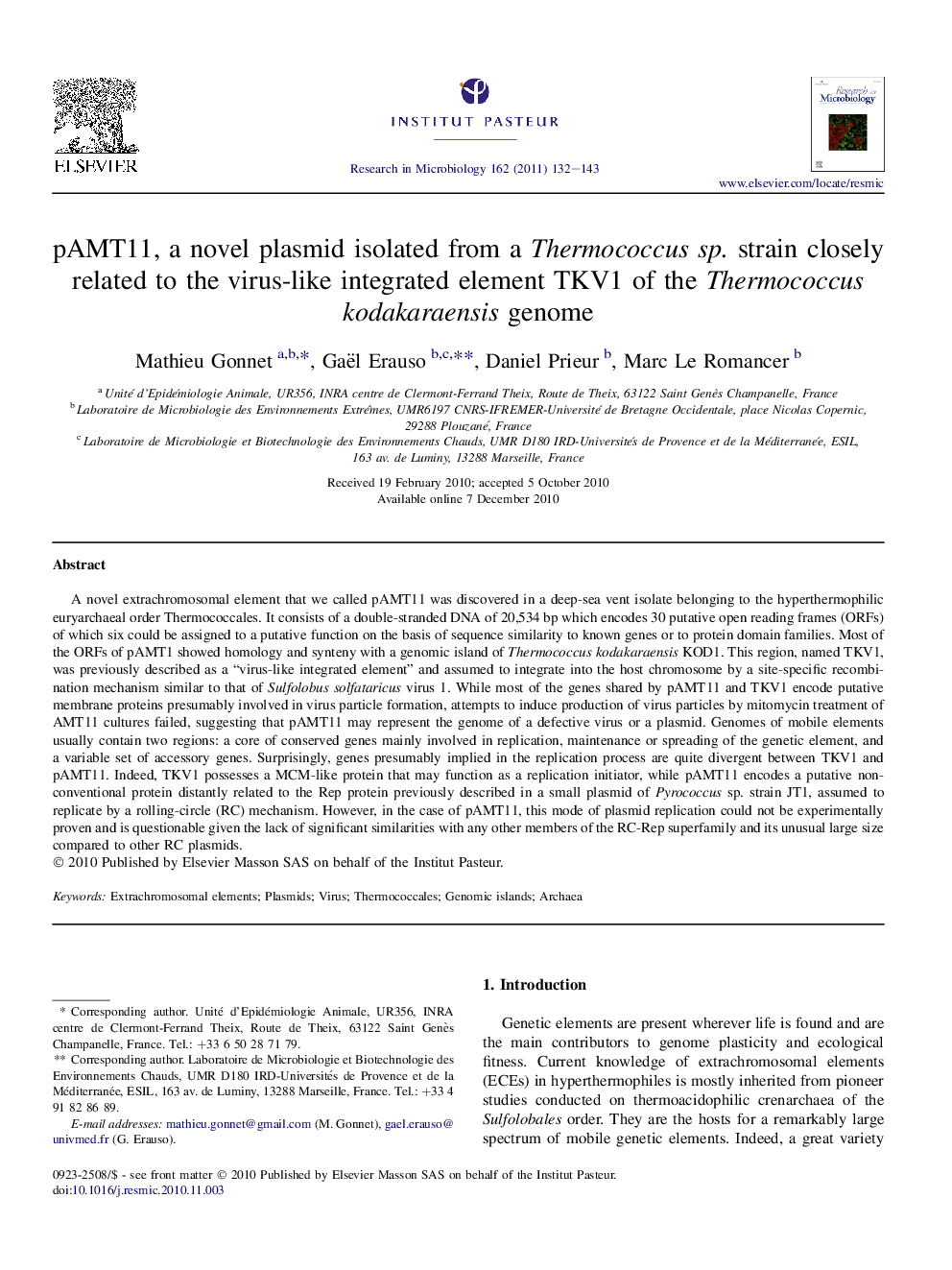| Article ID | Journal | Published Year | Pages | File Type |
|---|---|---|---|---|
| 6288181 | Research in Microbiology | 2011 | 12 Pages |
Abstract
A novel extrachromosomal element that we called pAMT11 was discovered in a deep-sea vent isolate belonging to the hyperthermophilic euryarchaeal order Thermococcales. It consists of a double-stranded DNA of 20,534Â bp which encodes 30 putative open reading frames (ORFs) of which six could be assigned to a putative function on the basis of sequence similarity to known genes or to protein domain families. Most of the ORFs of pAMT1 showed homology and synteny with a genomic island of Thermococcus kodakaraensis KOD1. This region, named TKV1, was previously described as a “virus-like integrated element” and assumed to integrate into the host chromosome by a site-specific recombination mechanism similar to that of Sulfolobus solfataricus virus 1. While most of the genes shared by pAMT11 and TKV1 encode putative membrane proteins presumably involved in virus particle formation, attempts to induce production of virus particles by mitomycin treatment of AMT11 cultures failed, suggesting that pAMT11 may represent the genome of a defective virus or a plasmid. Genomes of mobile elements usually contain two regions: a core of conserved genes mainly involved in replication, maintenance or spreading of the genetic element, and a variable set of accessory genes. Surprisingly, genes presumably implied in the replication process are quite divergent between TKV1 and pAMT11. Indeed, TKV1 possesses a MCM-like protein that may function as a replication initiator, while pAMT11 encodes a putative non-conventional protein distantly related to the Rep protein previously described in a small plasmid of Pyrococcus sp. strain JT1, assumed to replicate by a rolling-circle (RC) mechanism. However, in the case of pAMT11, this mode of plasmid replication could not be experimentally proven and is questionable given the lack of significant similarities with any other members of the RC-Rep superfamily and its unusual large size compared to other RC plasmids.
Related Topics
Life Sciences
Immunology and Microbiology
Applied Microbiology and Biotechnology
Authors
Mathieu Gonnet, Gaël Erauso, Daniel Prieur, Marc Le Romancer,
